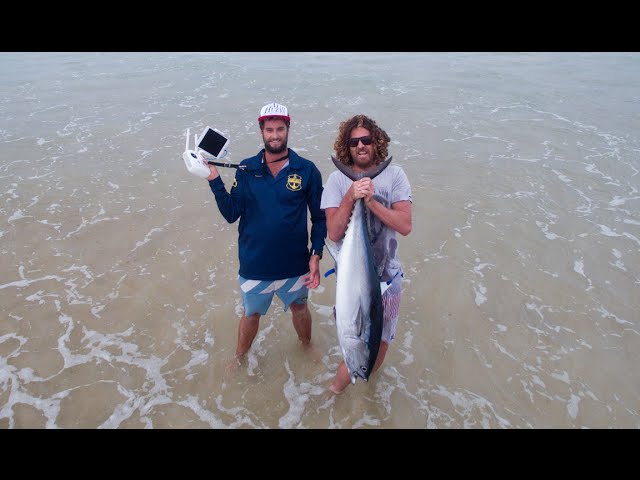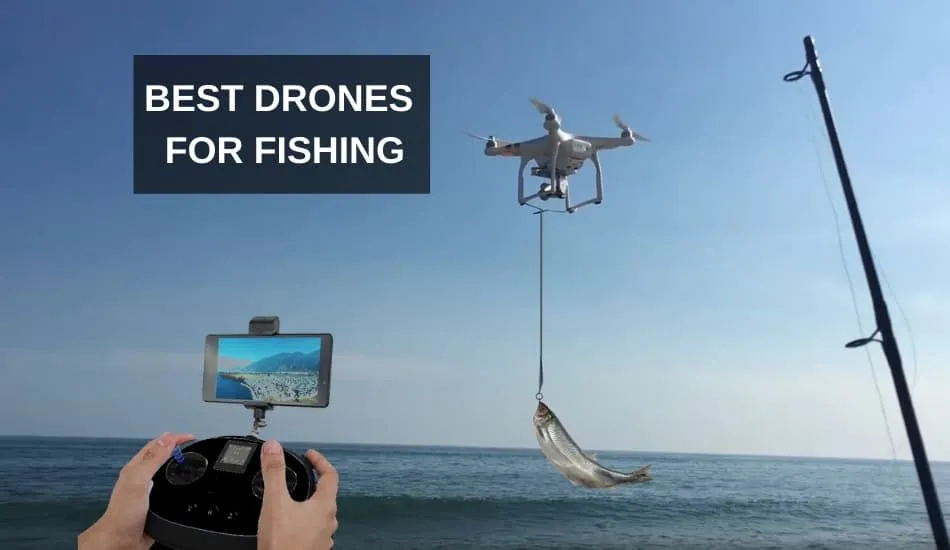
This article will discuss the basics behind a drone fishing system. We will also discuss what to look out for when selecting your drone, battery life and payload. Then, we'll discuss some ways you can get the most from your drone. Read on for some tips and tricks. You will soon have the drone that you dream of! Let's begin !..., and maybe even catch a few fish.
Basic drone fishing equipment
The first thing you will need to drone fish is a set of hooks. Double the fishing line, and make sure it is mono or braid. It should be tied with a Cat's Paw Loop, Uni knot or Uni knot. You will also need a sinker (between two and eight ounces), and hooks to attach to every second section of the backbone. Attach the snap swivel's lead loop to your drone's end loop.
There are many ways you can create a fishing drone. An easy way to make a fishing drone is to attach a hook onto the drone's landing gear. Then spin the line until the line is released. You can also use a dropper or drop line to keep the fishing line down below the drone. Droppers are a way to keep the main line from getting caught up in propellers. You can add accessories to your fishing drones, such as a dock and a battery pack.
You will need additional equipment once you have bought the basic drone fishing gear. A long fishing line (approximately 700m) and a bait-dropping device are essential. These are optional accessories, but they can make your drone fishing adventure more enjoyable. A drone can give you a better view of the surroundings and help you spot fish easier.

Payload on drone fishing gear
Safety precautions must be followed if you are going to fly a drone to catch fish. Strong winds and rain are not safe conditions for your drone to fly. Here are some suggestions:
First, ensure that the drone has enough weight to support its weight. The drone will not stay stable if it is loaded with heavy lures or braided lines. It may also blow off its course if you are fishing along the coast. It's also important to check local regulations and laws, as some may not allow fishing from a drone. You need to ensure that your drone is strong enough to carry you when you go fishing.
The next step is to determine which accessories you'll need to mount on your drone. A good rule of thumb is to use a rigging system that has a central attachment point to reduce weight distribution problems. The motor struts of the drone, landing gear, as well as the legs are the most appropriate attachment points. Avoid attaching payloads to your camera or gimbal, as they can be damaged. A simple solution is to tie a length of fishing line from one corner to the other. This can be secured with tape to prevent it from falling out.
Battery life for drone fishing gear
Before going out fishing with your drone, be sure to check the batteries and the other gear. This will prevent your drone from running low on battery life, and you can focus on fishing instead. Some drones come with solar panels that can be charged by car batteries or solar panels. Start out by having fully charged batteries. This will ensure your drone is ready to fly when you reach your fishing spot.

A drone's flight times are another important consideration. Although some drones have longer flight times, others can fly for as little as twenty-two seconds. This is a great option if you plan to spend hours on the ocean with your drone. Be aware, however, that a drone with limited endurance may not be able to fly and make it virtually impossible to catch fish.
Once you have set up your fishing rig, attach your fishing line clip to the legs of the drone, or to the motor struts. Attach the bait to your fishing line. Lock the reel when you are ready for the drone to fly. Once you release the line, tension will build and the drone will drop the bait in the water. You should charge the battery every time you use it, otherwise it might not function properly.
FAQ
What US states do drones are legal in?
You can legally fly a drone for personal use. The Federal Aviation Administration (FAA) has set up guidelines that allow people to use small unmanned aircraft systems (UASs). Before UASs can be flown, they must be registered with FAA. If certain conditions are met the FAA will allow commercial operators to fly these drones.
Is Drones Prohibited?
The FAA has banned drones in areas near airports and stadiums. However, they allow them to fly nightly using GPS technology.
You can fly a drone as high as you like without a license.
The FAA has no limits on the maximum height a drone can fly. However, you must register your unmanned aircraft system (UAS), which includes the registration numbers, model name and weight, size, serialnum, manufacturer's name and date manufactured.
Is it necessary to have special training in order to fly a drone
You don't require any special training to fly your drone. A remote control unit is all you need. You also need to have some basic knowledge of flight mechanics.
What is the best drone to buy for beginners?
The DJI Phantom 2 Vision+ drone is a popular choice for beginners. This drone comes with a 4K camera which can be used to take aerial photos and videos. The drone's GPS system allows you to navigate easily.
Is it legal to fly a drone in the United States?
Yes, it is illegal to fly drones in some countries like Australia, Canada and New Zealand. It is however legal in many other countries such as France.
Statistics
- Research and Markets predict a growth rate of 51.1% over the next five years. (thedroneu.com)
- With the top 10% making over $100/h and the bottom 10% making as low as $10/h. (dronesgator.com)
- According to industry research from ZipRecruiter , there are 10 cities where the typical salary for a Drone Pilot job is above the national average. (dronesgator.com)
External Links
How To
How to Fly Drones With Beginners
A drone is an unmanned aerial vehicle that can be remotely controlled and used for surveillance, aerial photography, film production, research, and other hobby purposes. Drone technology has existed since World War II. DJI's Phantom quadcopters became commercially available in 2010. There have been many types of drones since then, including beginner-friendly drones like the Parrot AR Drone 2.0 and professional-grade multi-rotor crafts like the DJI Mavic Pro.
There are several ways to fly a drone, including;
-
Remote control: This uses a remote control device that attaches to your hand and allows you control the drone along its flight path. There are two main types: Joysticks (like a radio), and On/Off switches (like an alarm clock).
-
Manual Control- This allows you to control your drone remotely via GPS coordinates. The app will provide instructions and help you to locate the drone.
-
Autonomous flight - The drone takes over the piloting duties. The drone is able to fly autonomously, without the need for human intervention. For the autonomous flight to occur, the drone must have a built-in camera and sensors capable of capturing images and data.
-
Triggered Flight - This method is similar to manual control, except the pilot manually sets up a preprogrammed route, and the drone follows that route until it reaches the endpoint. After the preprogrammed route is complete, the drone will automatically land and return to its base.
-
Landing Gear – Some drones are equipped with landing gear, which allows them to safely land if they lose power during flight.
-
Goggles - Some pilots wear goggles to protect themselves from debris while operating.
-
Camera - Some drones can be equipped with cameras which enable you to capture photos from the sky.
-
Obstacles: Some drones are equipped with obstacle avoidance systems to prevent them from hitting obstacles.
-
Speed - Some drones can reach speeds of over 40 mph.
-
Battery Life - Most drones can last between 20 minutes to 3 hours, depending on how much power you're using.
-
Distance - Some drones can travel up 30 miles depending on the model.
-
Power source - Not all drones can use an external power source. Others can run on internal batteries.
-
Weight - Some drones can be as light as 1 pound while others can reach 4 pounds.
-
Size - Drones range from small devices that fit in one's palm to large crafts that weigh more than 50 pounds.
-
Price - Drones come in a variety of price categories, including high-end models which can run into the thousands and low-cost options that can start at $100.